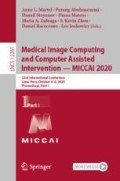Abstract
Addiction to drugs between young people is one of the most severe problems in the real world, and it imposes a huge financial and emotional burden on their families and societies. Therefore, predicting potential inclination to drugs at earlier ages can prevent lots of detriments. In this paper, we propose a new semi-supervised deep ordinal regression model to predict the possible propensity of adolescents to marijuana using the diffusion MRI-derived mean diffusivity (MD) from 148 Regions of Interest (ROIs). The traditional deep ordinal regression models cannot be directly applied to our biomedical problem which only has a small number of labeled data, not enough to train the deep learning models. Thus, we design a semi-supervised learning mechanism for deep ordinal regression, such that both labeled and unlabeled data can be used to enhance the model training. In our experiments, we use the ABCD dataset, which contains MRI images of the adolescents under study and their answers in the Likert scale to a questionnaire containing questions about Marijuana. Experimental results on the ABCD dataset validate the superior performance of our new method. Our study provides an inexpensive way to predict the drug tendency using brain MRI data.
This work was partially supported by U.S. NSF IIS 1836945, IIS 1836938, IIS 1845666, IIS 1852606, IIS 1838627, IIS 1837956.
Access this chapter
Tax calculation will be finalised at checkout
Purchases are for personal use only
References
Berthelot, D., Carlini, N., Goodfellow, I., Papernot, N., Oliver, A., Raffel, C.A.: Mixmatch: a holistic approach to semi-supervised learning. In: Advances in Neural Information Processing Systems, pp. 5050–5060 (2019)
Chapelle, O., Schlkopf, B., Zien, A.: Semi-Supervised Learning, 1st edn. The MIT Press, Cambridge (2010)
Frank, E., Hall, M.: A simple approach to ordinal classification. In: De Raedt, L., Flach, P. (eds.) ECML 2001. LNCS (LNAI), vol. 2167, pp. 145–156. Springer, Heidelberg (2001). https://doi.org/10.1007/3-540-44795-4_13
Grandvalet, Y., Bengio, Y.: Semi-supervised learning by entropy minimization. In: Advances in Neural Information Processing Systems, pp. 529–536 (2005)
Hinton, G.E., Srivastava, N., Krizhevsky, A., Sutskever, I., Salakhutdinov, R.R.: Improving neural networks by preventing co-adaptation of feature detectors. arXiv preprint arXiv:1207.0580 (2012)
Kingma, D.P., Ba, J.: Adam: a method for stochastic optimization. arXiv preprint arXiv:1412.6980 (2014)
Krizhevsky, A., Sutskever, I., Hinton, G.E.: ImageNet classification with deep convolutional neural networks. In: Advances in Neural Information Processing Systems, pp. 1097–1105 (2012)
Laine, S., Aila, T.: Temporal ensembling for semi-supervised learning. arXiv preprint arXiv:1610.02242 (2016)
Li, L., Lin, H.T.: Ordinal regression by extended binary classification. In: Advances in Neural Information Processing Systems, pp. 865–872 (2007)
Lin, H.T., Li, L.: Reduction from cost-sensitive ordinal ranking to weighted binary classification. Neural Comput. 24(5), 1329–1367 (2012)
Liu, Y., Wai Kin Kong, A., Keong Goh, C.: A constrained deep neural network for ordinal regression. In: Proceedings of the IEEE Conference on Computer Vision and Pattern Recognition, pp. 831–839 (2018)
Nair, V., Hinton, G.E.: Rectified linear units improve restricted Boltzmann machines. In: Proceedings of the 27th International Conference on Machine Learning (ICML-10), pp. 807–814 (2010)
Niu, Z., Zhou, M., Wang, L., Gao, X., Hua, G.: Ordinal regression with multiple output CNN for age estimation. In: Proceedings of the IEEE Conference on Computer Vision and Pattern Recognition, pp. 4920–4928 (2016)
Sajjadi, M., Javanmardi, M., Tasdizen, T.: Regularization with stochastic transformations and perturbations for deep semi-supervised learning. In: Advances in Neural Information Processing Systems, pp. 1163–1171 (2016)
Shashua, A., Levin, A.: Taxonomy of large margin principle algorithms for ordinal regression problems. Adv. Neural Inf. Process. Syst. 15, 937–944 (2002)
Tarvainen, A., Valpola, H.: Mean teachers are better role models: weight-averaged consistency targets improve semi-supervised deep learning results. In: Advances in Neural Information Processing Systems, pp. 1195–1204 (2017)
Verma, V., Lamb, A., Kannala, J., Bengio, Y., Lopez-Paz, D.: Interpolation consistency training for semi-supervised learning. arXiv preprint arXiv:1903.03825 (2019)
Acknowledgment
Data used in the preparation of this article were obtained from the Adolescent Brain Cognitive Development (ABCD) Study(https://abcdstudy.org), held in the NIMH Data Archive (NDA). This is a multisite, longitudinal study designed to recruit more than 10,000 children age 9–10 and follow them over 10 years into early adulthood. The ABCD Study is supported by the National Institutes of Health and additional federal partners under aware numbers U01DA041022, U01DA041028, U01DA041048, U01DA041089, U01DA041106, U01DA041117, U01DA041120, U01DA041134, U01DA041148, U01DA041156, U01DA041174, U01DA041123, U01DA041147. A full list of supporters is available at here(https://abdstudy.org/nih--collaborators). ABCD consortium investigators designed and implemented the study and/or provided data but did not necessarily participate in the analysis or writing of this report. This manuscript reflects the views of the authors and may not reflect the opinions or views of the NIH or ABCD consortium investigators. The ABCD data repository grows and changes over time. The ABCD data used in this report came from the NIMH Data Archive Digital Object Identifier (DOI)(https://doi.org/10.15154/1503885). (NDA Release 2.0). DOI can be found at here(https://nda.nih.gov/study.html?tab=cohort&id=693). (NDA Release 2.0)
Author information
Authors and Affiliations
Corresponding author
Editor information
Editors and Affiliations
Rights and permissions
Copyright information
© 2020 Springer Nature Switzerland AG
About this paper
Cite this paper
Ganjdanesh, A., Ghasedi, K., Zhan, L., Cai, W., Huang, H. (2020). Predicting Potential Propensity of Adolescents to Drugs via New Semi-supervised Deep Ordinal Regression Model. In: Martel, A.L., et al. Medical Image Computing and Computer Assisted Intervention – MICCAI 2020. MICCAI 2020. Lecture Notes in Computer Science(), vol 12261. Springer, Cham. https://doi.org/10.1007/978-3-030-59710-8_62
Download citation
DOI: https://doi.org/10.1007/978-3-030-59710-8_62
Published:
Publisher Name: Springer, Cham
Print ISBN: 978-3-030-59709-2
Online ISBN: 978-3-030-59710-8
eBook Packages: Computer ScienceComputer Science (R0)


